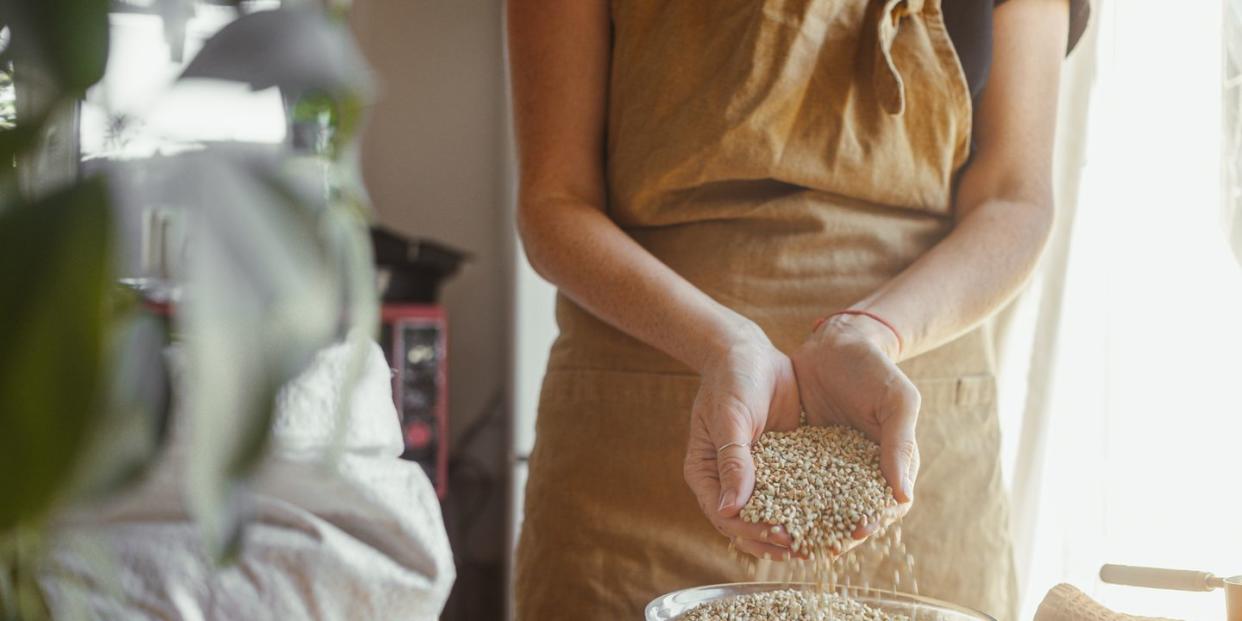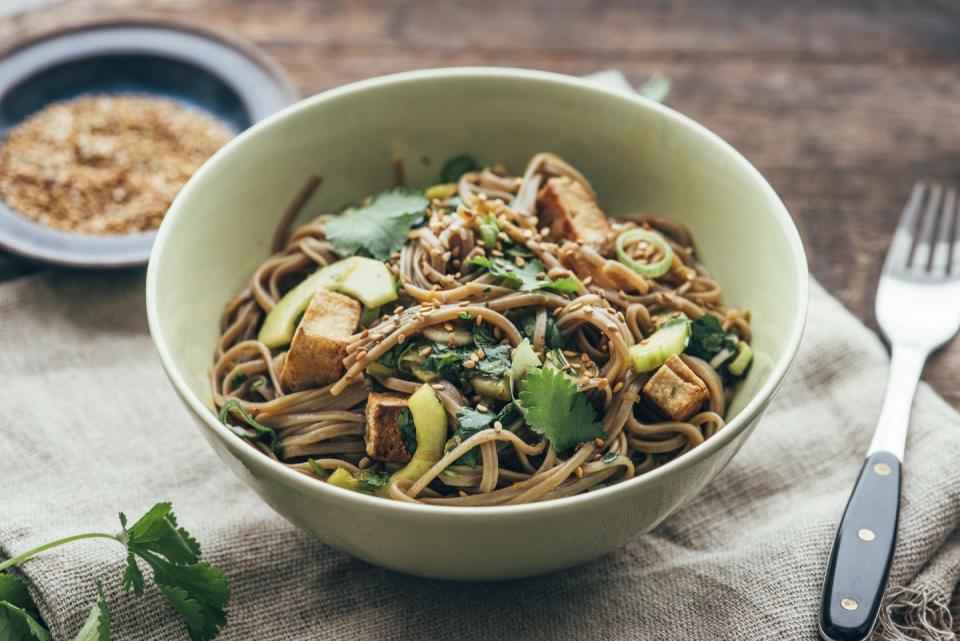Buckwheat is the naturally gluten-free nutrition powerhouse you need to know about

Compared to wheat, rice and oats, buckwheat isn’t the most popular carb source – but it’s getting its place in the spotlight at the moment. Wellness grocery store Whole Foods forecast buckwheat as one of the top 10 trending ingredients for 2024 and, as people begin to get acquainted with the grain, searches about it have increased exponentially on Google.
But we wouldn’t recommend food trends unless they were good – and buckwheat is one nutritional sensation we can get behind.
What is buckwheat?
‘Buckwheat isn’t a grain but rather a seed or pseudocereal,’ says Rohini Bajekal, nutritionist and co-author of Living PCOS Free. Other pseudocereals – those that can mimic the purpose of cereal grains but are grown differently – include quinoa and amaranth, so it’s a food group loved by nutritionists.
‘Buckwheat is sold either raw or roasted as buckwheat kernels or groats,’ explains Bajekal. These groats look like tiny brown pyramids. It can also be ground into flour or sold as noodles (traditional soba noodles are made from buckwheat and wheat flour) and bread, just like other grains and pseudocereals.
Is buckwheat gluten-free?
Despite the name, buckwheat doesn’t contain wheat. ‘Buckwheat is actually a gluten-free seed and a great alternative to gluten-based grains,’ says Maz Packham, a nutritionist from Nourishful Nutrition. Even if you aren’t gluten-free, opting for buckwheat over your standard grains can be a good way to diversify your diet.
Research shows that eating around 30 plants a week is the best way to support a healthy gut and grains count towards your total count. Adding in buckwheat alongside your rice, wheat and other grains will help feed a healthy microbiome. ‘Try to experiment with different combinations of seeds and flavours alongside your buckwheat to have a varied mix of plant-based foods in the diet and hit your 30 goal,’ suggests Packham.
What are the benefits of eating buckwheat?
As well as adding diversity, having buckwheat in your diet can help your gut because it’s high in fibre, with around 10g of fibre per 100g of grout. ‘It’s rich in both soluble and insoluble fibre which are both essential for good digestive health and a healthy gut as well as promoting regular bowel movements,’ says Packham. That fibre also helps give you a slow energy release. ‘Buckwheat is a low GI food which means it doesn’t cause a rapid increase in blood glucose after eating it.’
Bajekal agrees, saying: ‘Some studies on buckwheat show the benefit for reducing blood cholesterol and regulating blood sugar as it contains chiro-inositol which helps with glucose metabolism and cell signalling.’ There is a lacking number of rigorous human studies on buckwheat, but one review from 2018 found that increasing the intake of buckwheat-based products for up to 27 weeks decreased total cholesterol by an average of 0.5%, an amount associated with a decreased risk of vascular events.
And the nutritional powerhouse is also packed full of nutrients. ‘Buckwheat is a good source of magnesium, copper, phosphorus and B vitamins,’ says Packham, with Bajekal adding that it ‘contains more potassium, vitamins and minerals than many grains such as rice, oats and corn. From a climate perspective, buckwheat grows quickly and is sustainable, as it can thrive in poor soil conditions without needing many pesticides or chemical fertilisers.’
In short: it’s a great nutritional addition to the regular carbohydrates in your diet.
How to cook and eat buckwheat

You can add buckwheat groats in place of any other grain or pseudocereal, from rice to porridge.
‘Buckwheat groats are the whole seeds of the buckwheat plant and they can be simmered with milk or water to make porridge, added whole to soups or baked with nuts and seeds to make a granola,’ suggests Packham. Bajekal suggests ‘toasting roasted buckwheat in a skillet to add crunch to smoothie bowls, salads or granola. Roasted groats can be cooked like rice and added to grain bowls.’
You can either buy buckwheat flour or blend raw groats to make your own. ‘This can be used in baking to make bread, muffins or pancakes, for example,’ says Packham.
Or try one of the traditional uses for buckwheat. ‘In France, galletes are usually savoury crepes made from buckwheat flour. In Japan, soba noodles are popular. You can also find 100% gluten-free buckwheat noodles in health food stores in the UK. In parts of Eastern Europe, kasha is a porridge made from simmered roasted buckwheat,’ explains Bajekal.
Want some recipe inspo? Try these buckwheat meals
Buckwheat porridge
Buckwheat salad
Buckwheat risotto
Buckwheat pancakes
Cut through the noise and get practical, expert advice, home workouts, easy nutrition and more direct to your inbox. Sign up to the WOMEN'S HEALTH NEWSLETTER
New in nutrition
Food intolerance tests: Helpful for identifying gut issues or a money-grabbing gimmick?
6 benefits of nutritional yeast that will make you want to use it on all your food
‘I religiously took these probiotics every day for two months and the results surprised me’
Everything you need to know about electrolytes – because good hydration is about more than just drinking water
You Might Also Like


